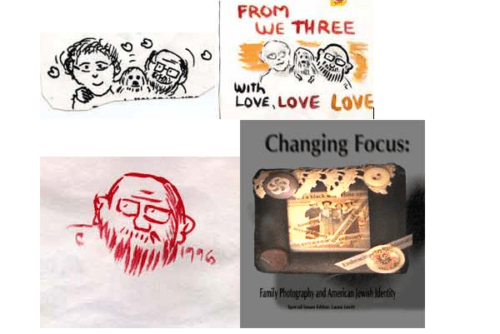Writing about Josephine Baker, one inevitably confronts questions of agency. How much control did Baker have over her performances and persona? Did her success derive from her capitulation to racist stereotypes that insisted on black primitiveness, or from her ability to play with and rattle those stereotypes? Was she object or subject? While critics, biographers, and scholars have taken a range of positions on these issues, today I want to take the occasion of the centennial of her birth and this remarkable colloquium to approach these questions from a slightly different angle by asking: Who should be considered the author, or choreographer, of the dancing Baker performed? As Mae Henderson rightly points out, “It was the dancing body that brought to Baker the status of … stardom.”1 Yet the actual crafting of her dance practice often gets short shrift. Paying heed to the composition and execution of Baker’s dance moves, I hope to show, has implications not only for the ways we understand her agency and artistry, but also for the ways we understand the operation of authorship in dance.
Here I should note that my interest in querying Baker’s dance authorship stems from my work on Zora Neale Hurston’s staging of black diaspora folk dance in the 1930s. Recovering her contributions to American dance and trying to account for her “invisibilization” from the dance record provided a vivid case study in how the misrecognition of black choreographic labor enabled white dancers to construct themselves as innovative artists, and indeed as choreographers, working with black “raw material.”2 As I turn my attention to Baker, I want to continue thinking through the racial politics of the ways we perceive and categorize dance labor.
Today, questions of authorship are virtually impossible to address without conjuring up poststructuralist claims about the death of the author. As part of broader challenges to the stability of subjects and the coherence of texts in the late 1960s, writers like Roland Barthes and Michel Foucault productively complicated traditional notions of the author, recasting it as a function of discourse that serves as a “means of classification” and is “regulated by the culture in which it circulates.”3 Yet, as scholars in literary and legal studies have pointed out in response, authorship continues to hold a good deal of economic, legal, political—as well as aesthetic and cultural—capital.4 For raced and gendered subjects who have historically been denied the privileges of authorship, moreover, matters of recognition and authorial control cannot be so easily written off.5
Building on the insights of both the poststructuralists and those who have argued for the continuing relevance of the author, this paper seeks to further explore the ways in which authorship has been constructed without losing sight of its very real ramifications and material stakes. A parsing of choreographic influence, authority, and attribution vis-à-vis Baker’s dancing, I will suggest, problematizes conventional models of authorship and helps flesh out the contours of her struggle for self-determination. In particular, Baker points to the idea of “bodily intelligence” as a way of confronting questions about the nature and locus of her agency.
- Mae G. Henderson, “Josephine Baker and La Revue Nègre: From Ethnography to Performance,” Text and Performance Quarterly 23, no. 2 (April 2003): 119. [↩]
- I borrow the term “invisibilization” from Brenda Dixon Gottschild, Digging the Africanist Presence in American Performance: Dance and Other Contexts (Westport, CT: Greenwood Press, 1996). [↩]
- Michel Foucault, “What Is an Author?” in Language, Counter-Memory, Practice, ed. Donald F. Bouchard (Ithaca, NY: Cornell University Press, 1977), 123; Roland Barthes, “Death of the Author,” in Image, Music, Text, ed. and trans. Stephen Heath (New York: Hill, 1977). [↩]
- See, for example, Peggy Kamuf, Signature Pieces: On the Institution of Authorship (Ithaca: Cornell University Press, 1988); Martha Woodmansee, The Author, Art, and the Market: Rereading the History of Aesthetics (New York: Columbia University Press, 1994); Martha Woodmansee and Peter Jaszi, ed., The Construction of Authorship: Textual Appropriation in Law and Literature (Durham, NC: Duke University Press, 1994); and Rosemary J. Coombe, The Cultural Life of Intellectual Properties: Authorship, Appropriation, and the Law (Durham, NC: Duke University Press, 1998). [↩]
- See Betsy Erkilla, “Ethnicity, Literary Theory, and the Grounds of Resistance,” American Quarterly 47, no. 4 (1995): 563-594; and Cheryl Walker, “Feminist Literary Criticism and the Author,” Critical Inquiry 16 (Spring 1990): 551-71. Barbara Christian also notes how “the race for theory” has functioned to “silence” “people of color, feminists, radical critics, creative writers, who have struggled for much longer than a decade to make their voices, their various voices, heard, and for whom literature is not an occasion for discourse among critics but is necessary nourishment for their people and one way by which they come to understand their lives better” (“The Race for Theory,” in Within the Circle, ed. Angela Mitchell [Durham: Duke University Press, 1994], 350). [↩]




